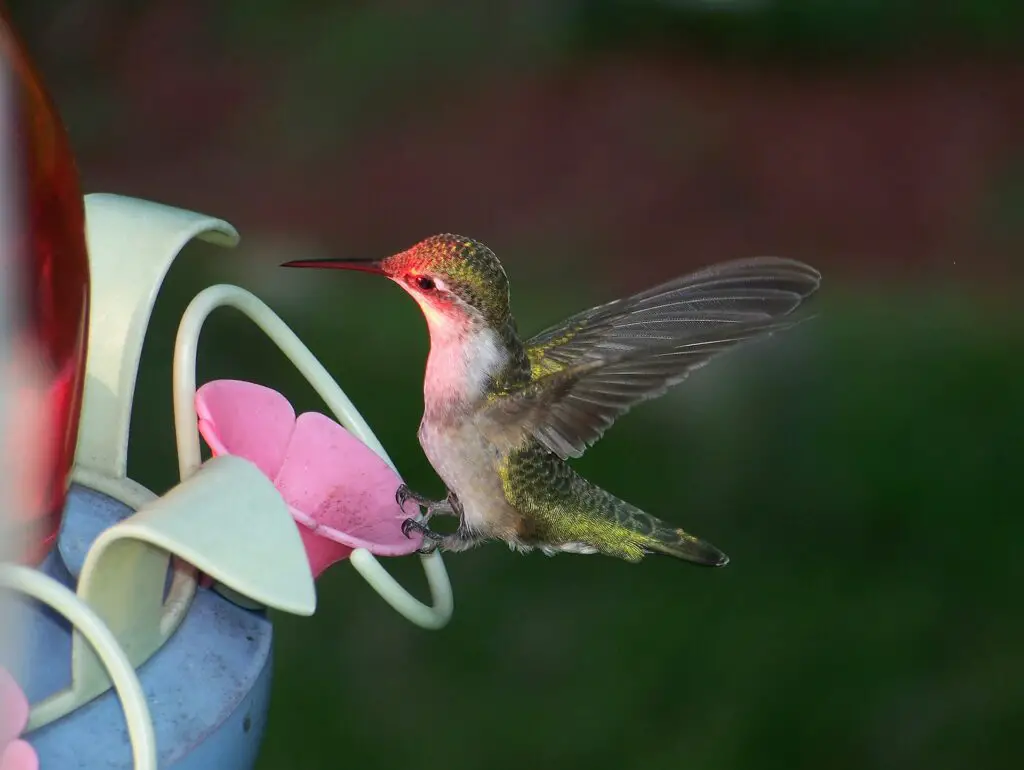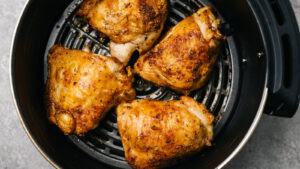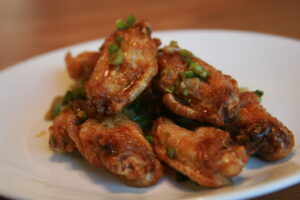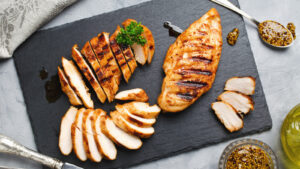Making hummingbird nectar at home is a simple and rewarding way to attract these fascinating birds to your garden or balcony. Hummingbirds are drawn to the sweet liquid, which mimics the nectar found in flowers. Here’s a straightforward guide to creating your hummingbird nectar, ensuring a safe and nutritious supplement to the birds’ natural diet.
Ingredients and Supplies
Sugar: Plain white sugar is the best choice because it closely resembles the natural sucrose found in flowers. Avoid using honey, brown sugar, or any artificial sweeteners, as these can be harmful to hummingbirds.
Water: Tap water is generally fine, but if your tap water is heavily chlorinated or contains high levels of minerals, consider using filtered or bottled water to protect the birds’ health.
Measuring Cup
Saucepan
Spoon for stirring
Storage Container: For storing any leftover nectar in the refrigerator.
Hummingbird Feeder: Ensure it’s clean and free from any mold or debris.
Step-by-Step Instructions
Measure the Ingredients
The standard ratio for hummingbird nectar is 4 parts water to 1 part sugar. This ratio closely replicates the average sucrose concentration of most flowers favored by hummingbirds. For a basic batch, you might use 1 cup of sugar and 4 cups of water.
Dissolve the Sugar
Combine the sugar and water in a saucepan. Warm the mixture over low to medium heat, stirring continuously until the sugar is completely dissolved. There’s no need to bring it to a boil; just heating it enough to dissolve the sugar is sufficient. This process also helps to sterilize the mixture, making it safer for the birds.
Cool the Nectar
Once the sugar is fully dissolved, remove the mixture from heat and let it cool to room temperature. It’s important not to put hot nectar into feeders, as it can harm the birds and potentially damage the feeder.
Fill Your Feeder
After the nectar has cooled, fill your clean hummingbird feeder with the amount of nectar you wish to offer. Avoid overfilling to reduce waste, as you should ideally replace the nectar and clean the feeder every few days to prevent fermentation and bacterial growth.
Store the Remaining Nectar
If you have leftover nectar, store it in a clean, airtight container in the refrigerator. It should be good for up to two weeks. Check for any signs of spoilage before using it, and always bring it to room temperature before filling the feeder.
Additional Tips
Clean Your Feeder Regularly: Clean your feeder thoroughly at least once a week with hot water and a mild detergent. Rinse it well to ensure no soap residue remains.
Placement of the Feeder: Place your feeder in a shaded area to slow fermentation of the nectar.
It should be at least four feet off the ground and away from any cover that predators could use to ambush the birds.
No Red Dye: There’s no need to add red dye to the nectar. Although hummingbirds are attracted to red, using a feeder with red components or placing it near red flowers will do the trick without potentially harming the birds.
By following these simple steps, you can make a nutritious, safe, and attractive nectar for hummingbirds, inviting these beautiful creatures into your space for mutual enjoyment.
Observing Hummingbird Behavior
Once you’ve set up your feeder filled with homemade nectar, you’ll likely start to see hummingbird visitors. Observing these birds can be a delightful and educational experience.
Here are some tips to enhance your bird-watching experience:
Be Patient: It may take a few days for hummingbirds to discover your feeder, especially if it’s newly placed. Once they find it, they’re likely to return regularly.
Document Visits: Keep a journal or log of hummingbird visits. Note the time of day, behavior, and any distinguishing features of the birds. This can help you learn more about the hummingbirds in your area and their habits.
Photography: Hummingbirds make excellent subjects for photography. Use a camera with a fast shutter speed to capture them in flight, or try video to study their behavior more closely.
Plant Flowers: To further attract hummingbirds, consider planting flowers that are rich in nectar and appealing to these birds. Some favorites include salvia, petunias, and zinnias. These natural food sources can provide additional nutrients and help attract more birds.
Maintenance and Seasonal Considerations
Maintaining your hummingbird feeder and nectar is crucial for the health of the birds. Here are some additional points to keep in mind:
Change Nectar Regularly: Replace the nectar every 2 to 3 days during hot weather and once a week during cooler temperatures to prevent spoilage and bacterial growth.
Watch for Bees and Ants: Insects are also attracted to the sweet nectar. To deter them, use feeders with bee guards or ant moats, or place the feeder away from areas where these insects are prevalent.
Seasonal Feeding: Keep feeders out from spring through fall. In areas where hummingbirds are present year-round, you might continue feeding in the winter. However, be mindful of freezing temperatures, which can cause the nectar to freeze.
Migration Considerations: If you’re in an area where hummingbirds migrate, leaving your feeder out in the fall can provide an important energy source for birds heading south. It’s a myth that feeders will prevent hummingbirds from migrating. They’re driven by instinct and the decreasing daylight hours, not the availability of food.
Creating homemade hummingbird nectar is a simple, enjoyable way to attract these enchanting birds to your garden or balcony. Not only does it provide them with a valuable energy source, but it also offers you the opportunity to observe their beautiful colors, agile flight, and interesting behaviors up close. By following the steps and tips provided, you can ensure a safe and nutritious feeding environment for hummingbirds, contributing to their well-being while enjoying their company throughout the feeding season.
Frequently Asked Questions (FAQ) About Hummingbird Nectar
Can I use brown sugar or honey instead of white sugar?
No, it’s important to use plain white sugar to make hummingbird nectar. Brown sugar contains molasses, which can be harmful to hummingbirds. Honey can ferment more quickly and harbor bacteria that are dangerous to these birds. Stick to white sugar, which closely mimics the natural sucrose found in flower nectar.
How often should I clean my hummingbird feeder?
You should clean your hummingbird feeder at least once a week, but it may need cleaning more frequently during hot weather or if you notice the nectar becoming cloudy or contaminated with debris. Use hot water and a mild detergent, and make sure to rinse thoroughly to remove any soap residue.
Is it necessary to boil the water when making nectar?
Boiling is not strictly necessary if you’re using clean, potable water, but it can help to ensure the sugar is fully dissolved and to sterilize the mixture, making it safer for the birds. If you choose not to boil the water, make sure the sugar is completely dissolved in warm water before use.
How can I prevent ants and bees from getting to the feeder?
To deter ants, you can use an ant moat, a device filled with water that hangs above the feeder.
Ants can’t cross the water to reach the nectar. For bees, look for feeders with bee guards or designs that make it difficult for bees to access the nectar while still allowing hummingbirds to feed. Keeping the feeder clean and leak-free also helps reduce attraction to bees.
Will red dye hurt hummingbirds? Should I add it to the nectar?
It’s best to avoid adding red dye to the nectar. There’s no proven benefit to the birds, and there are concerns about the potential harmful effects of the dye. To attract hummingbirds, use a feeder with red elements or hang it near red flowers. The color red is what attracts them, not the color of the nectar.
What should I do if my hummingbird nectar freezes?
If you live in an area where temperatures fall below freezing, it’s important to bring your feeders in at night or use a heated hummingbird feeder to prevent the nectar from freezing.
Hummingbirds need to feed early in the morning and throughout the day, especially in cold weather, so ensuring they have access to liquid nectar is crucial.
Can leaving a feeder out too long delay hummingbird migration?
No, hummingbirds are triggered to migrate by environmental cues such as day length and changes in weather, not the availability of food. Leaving your feeders up in the fall can actually help migrating birds by providing them with a necessary energy source along their journey.
By understanding these aspects of hummingbird feeding and care, you can help create a safe and inviting environment for these fascinating birds, contributing to their health and well-being while enjoying their presence in your outdoor spaces.




